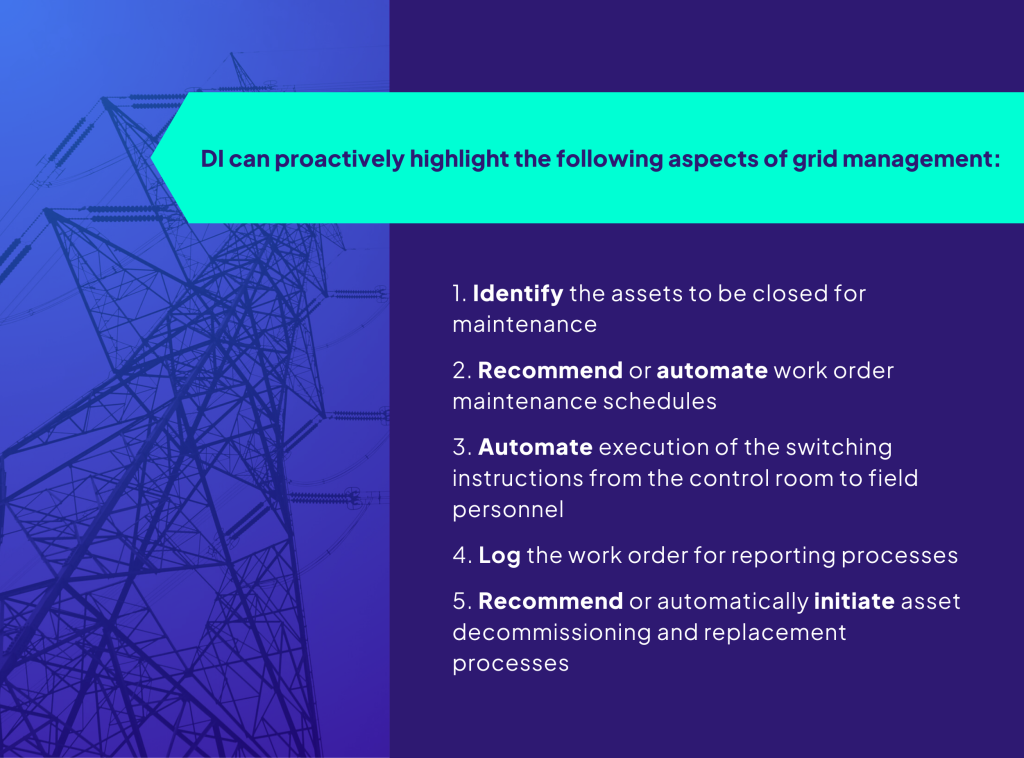Energy & UtilitiesOptimize Technology
Guarding the grid: Cybersecurity in solar and renewable energy
Instead of implementing static, one-size-fits-all solutions in an environment where threats are continuously evolving,…
Read article

Energy & Utilities Data & Analytics
11/13/2024
by Scotty Buoy, Sam Leflar, and Vinod Krishnan

Approximately 65 percent of decisions made today are more complex, involve more stakeholders, or involve more options than in 2019. And despite technology’s growing role in decision-making, a recent Gartner report found that most decision-making methodologies remain reliant on consensus, deliberation, and human interaction.
Due to heavy regulation and challenging market conditions, power and utility companies must make decisions with increased scrutiny and transparency while still aiming for profitability. This can lead to complex, consensus-based processes, causing prolonged discussions and delayed decision-making.
The use of decision intelligence (DI) tools can help utility providers make better decisions through a data-driven approach by identifying patterns and insights in large amounts of information, ultimately supporting more informed and strategic outcomes. There are a number of ways DI can help utilities, including optimizing supply chains, enhancing grid management, and improving customer relations. This article will dive into a single DI use case in the utilities industry, focusing on how technology can enable predictive and automated grid management processes.
Decision intelligence provides power and utility organizations with the opportunity to improve outage management processes in terms of efficiency, reliability, and accuracy. Through advanced data analytics, machine learning, and real-time monitoring, DI enables utilities to optimize essential processes—scheduling outages, conducting switching activities, and publishing regular reports with recommendations for immediate and long-term actions. The result? A more resilient, automated, and efficient power grid.
Aging infrastructure, climate conditions, scheduled construction, and overload situations are just a few of the factors that contribute to outages. Predicting these outages requires extensive data and real-time monitoring of the assets while managing outage work orders requires the proper equipment prioritization based on risk rating, asset age, and health. Currently, operators manually assess these factors, making both decision-making and scheduling time-consuming and error-prone. Additionally, the volume of data needed for control room operations adds to the daily workload of transmission grid controllers, leaving limited time to analyze current complex scenarios and accurately predict future outages. Some of this burden, however, can now be offloaded to digital systems and computing power.
By integrating DI tools with key source systems—such as enterprise data warehouses, asset management systems, switching control systems, and digital grid management systems—the process can be significantly expedited. Decision intelligence software can analyze data and recommend a real-time proposal that displays the impact of the outage on the lines and buses, number of substations, number of consumers, impacted generators, and other assets in the pathway of the outage. By leveraging DI, utilities can develop a predictive maintenance strategy that identifies weak points in the grid infrastructure and addresses them before they result in outages.

Applying DI to the outage management process will help control room managers prioritize work orders based on risk and asset conditions while allocating resources more efficiently. This approach ensures the selective deployment of resources based on availability, criticality, and the location of the outage, ultimately reducing waste and minimizing financial impact. Additionally, a streamlined process will not only enhance operational efficiency but also safeguard utilities against costly penalties for failing to meet regulatory requirements.
Incorporating decision intelligence into the management of utilities’ core functions offers numerous benefits, fundamentally transforming how companies operate and deliver services. By integrating data, analytics, and digital tools, DI enhances the efficiency of grid management, streamlines asset maintenance, and optimizes supply chain processes. It allows utilities to anticipate and respond to issues more effectively, reducing downtime and improving service reliability. This not only reduces costs but also helps in meeting regulatory requirements, ultimately leading to increased customer satisfaction.
A well-integrated system backed by decision intelligence ensures that utilities have a comprehensive view of their assets, from generation to distribution. This holistic approach enables utilities to:
Looking ahead, several trends will shape the future of the utility sector, including the increasing demand for power, the transition from fossil fuels to cleaner energy sources, and the need for climate change mitigation and adaptation strategies. As the landscape evolves, DI will be crucial in helping utilities navigate these challenges.
Ready to evaluate and implement decision intelligence effectively at your organization? Reach out to a Sendero consultant today!
Business insights
Energy & UtilitiesOptimize Technology
Instead of implementing static, one-size-fits-all solutions in an environment where threats are continuously evolving,…
Read article

Energy & Utilities
With ERCOT’s Real-Time Co-optimization plus Batteries initiative, a shift in how energy and ancillary services are…
Read article

Energy & UtilitiesOptimize Technology
New rules aimed at reducing emissions, enhancing grid reliability, and protecting consumer data are being introduced at…
Read article
